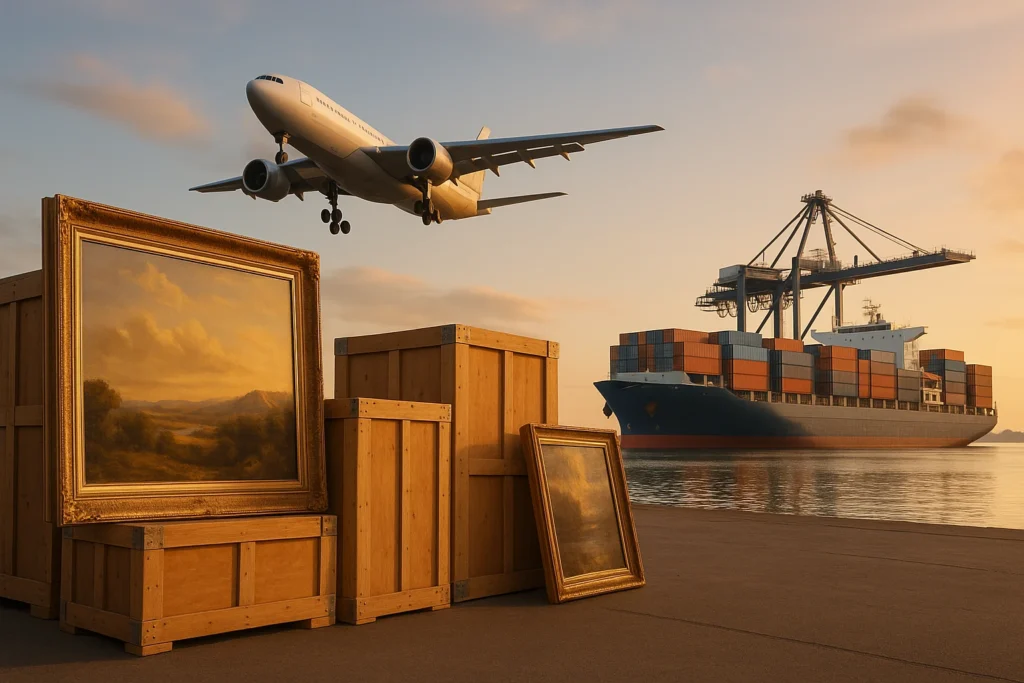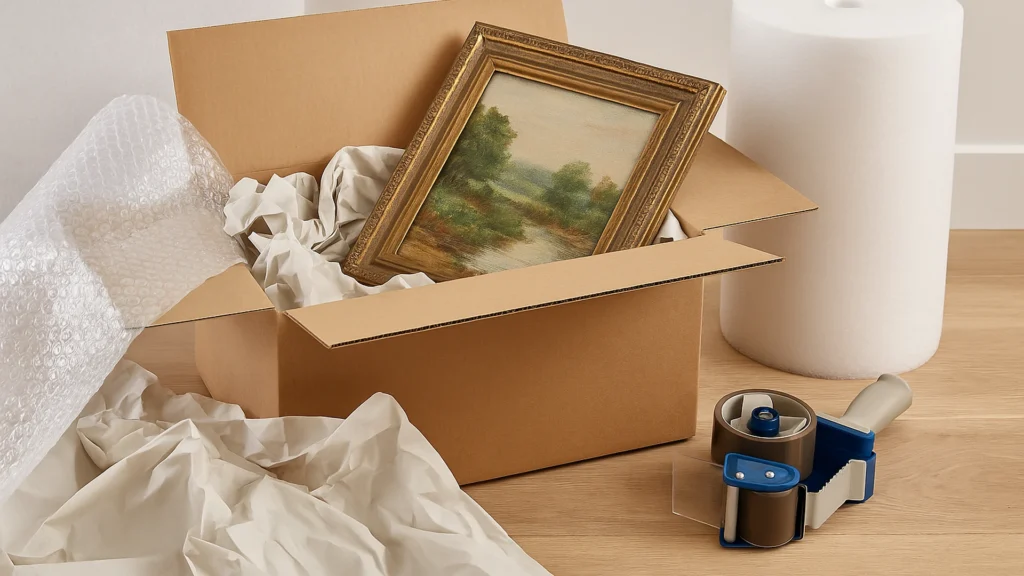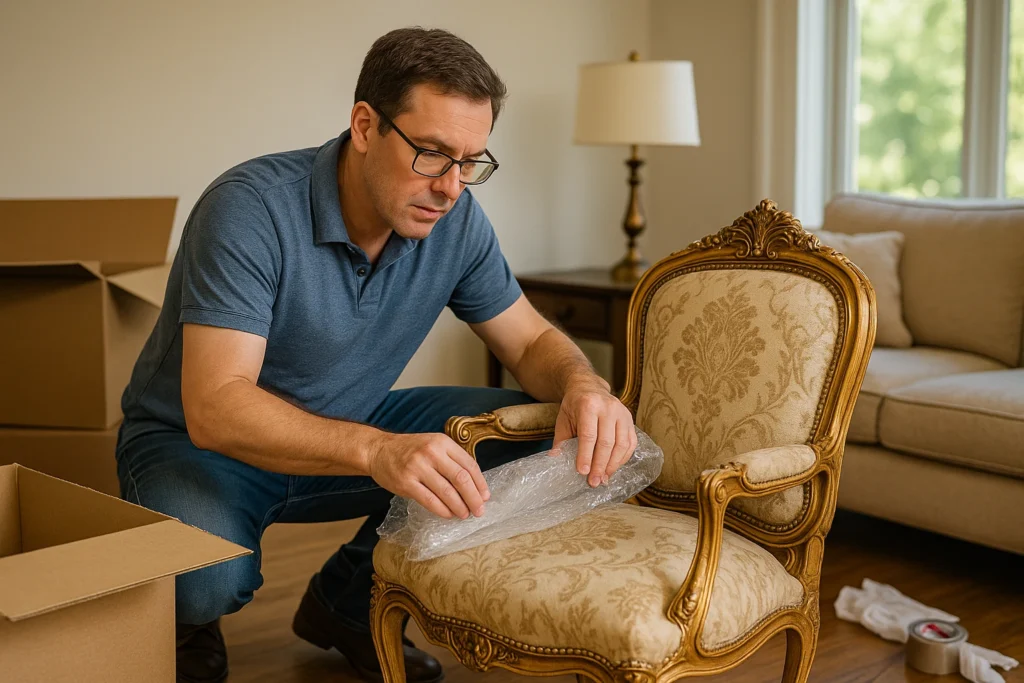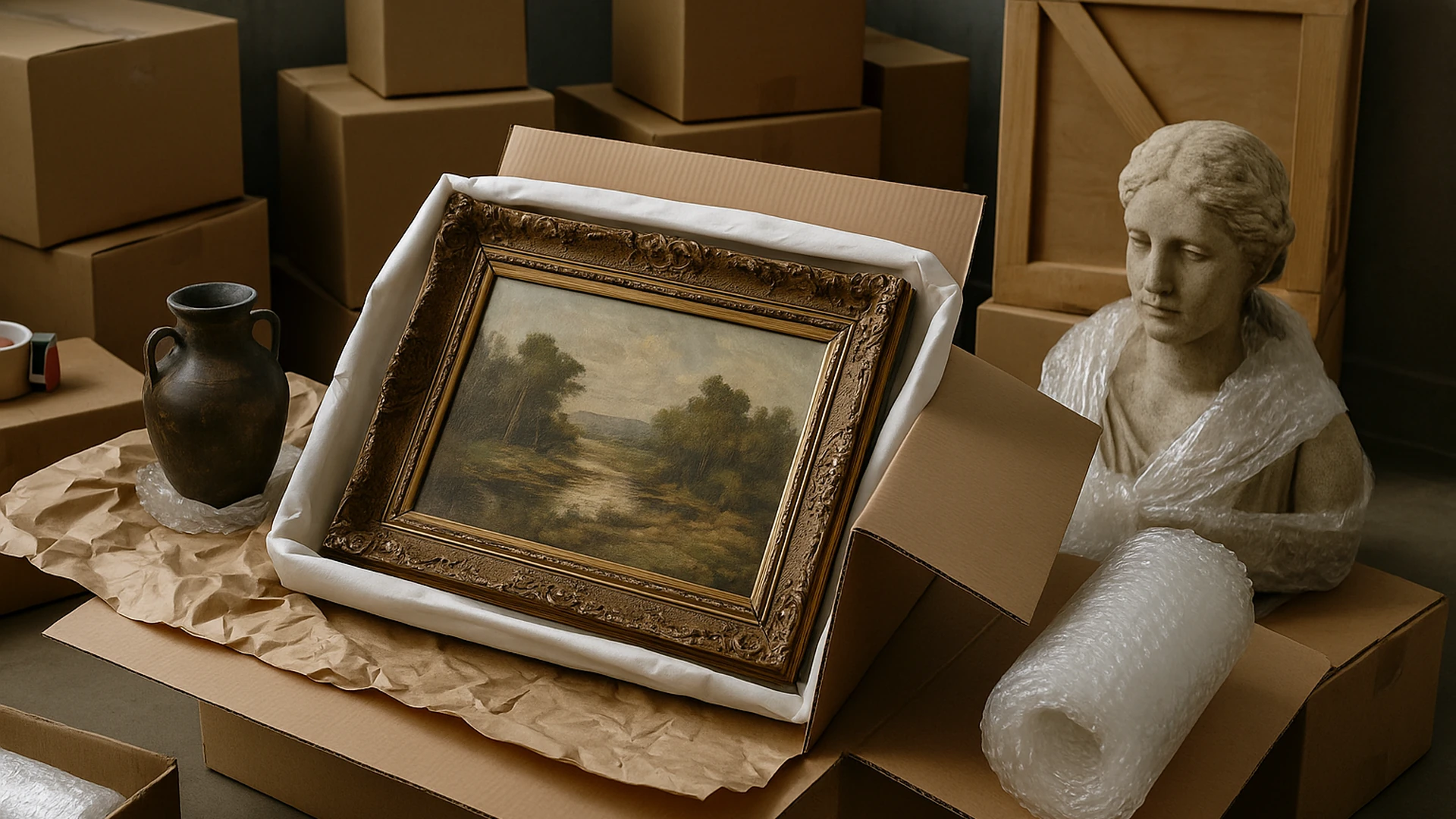Shipping antiques abroad can be intimidating when you’re dealing with irreplaceable family heirlooms or valuable art pieces. Yes, it’s a real concern, and it keeps many people from moving overseas with their belongings.
No worries, we’ll back you up.
We’ll break down international antique shipping into simple steps. With the right approach, you can move your precious items with complete confidence. Here’s what we’ll cover:
- Common shipping disasters and how to avoid them
- Air versus sea transport options
- Professional packing materials for delicate items
- Proven techniques that prevent damage
- DIY costs versus professional services
Our team has guided countless Australian collectors through successful international moves. Let’s start by looking at what can go wrong when proper precautions aren’t taken.
What Could Go Wrong When Shipping Antiques Abroad
Damage during shipping happens more often than most collectors expect. According to Burns & Wilcox insurance data, approximately 60 per cent of insurance claims for damaged art are related to transport.
So, the biggest threats to your valuable pieces include:
- Temperature extremes: Sudden heat and cold cause wood to crack and warp badly. Plus, metal components expand and contract during these temperature swings, often leading to structural damage that reduces value permanently. Antique furniture suffers the most from these fluctuations during long overseas journeys.
- Humidity problems: Moisture buildup creates mould growth on canvas and paper surfaces over time. Meanwhile, metal elements corrode, and wooden frames can swell and then split due to exposure to moisture. Oil paintings become particularly vulnerable when humidity levels exceed 60% during transit.
- Rough handling incidents: Careless dock workers drop boxes and bang crates against loading equipment without thinking. Even small impacts like these can chip delicate surfaces or break fragile components entirely.
- Poor packing mistakes: Items shift around dangerously when bubble wrap fails to secure them properly inside their containers during transit. As a result, pieces collide with each other during transport, causing scratches, dents, and complete breaks. Multiple items packed together without proper separation create the most damage during international shipping.
A single dent in an antique vase can slash its auction value in half. Also, collectors know that fine art pieces are especially vulnerable when cushioning materials aren’t used properly during the packing process.
Fortunately, these risks disappear when you know what precautions to take. The transport method you choose plays a huge role in keeping your treasures safe.
Air Freight vs Sea Freight: The Right Choice for Fine Art

Your choice between air freight and sea freight determines how safely your fine art reaches its destination. However, each shipping method brings distinct advantages and challenges for international art transport.
Consider these main differences:
- Timeline factors: Air freight gets your pieces there in less than a week when you’re in a hurry. Though sea freight takes much longer, it costs way less when you’re shipping multiple items and aren’t rushed about timing.
- Handling frequency: Loading and unloading happen multiple times with air transport as your artwork moves between different airports. However, with sea freight, everything stays in the same container for most of the journey, so fewer people handle your pieces.
- Weather exposure: Ocean storms and salty air never touch your items when you choose air freight for shipping. Sea freight indeed exposes your shipments to sea conditions, but the containers are built for protection, and the steady environment often works better for wooden antiques.
- Size limitations: Large furniture pieces can’t fit on planes because the cargo space is limited in aircraft. On the contrary, sea freight doesn’t care about size, so you can ship entire collections or oversized items without extra fees.
- Documentation needs: Customs paperwork is required for both options, but sea freight wants more detailed lists of everything you’re shipping. Meanwhile, air freight moves through customs much faster at most places, though you’ll pay more for that speed.
Your specific situation will determine which transport method works best for your valuable collection.
Professional Packing Materials That Protect Your Treasures

Standard packing materials simply won’t cut it when you’re shipping valuable antiques and artwork overseas. That’s why professional-grade protection requires specialised materials designed specifically for delicate items.
Let’s look at what really protects your treasures:
Professional-Grade Protection
Acid-free tissue paper wraps directly around surfaces without causing chemical reactions over time. Also, polyethylene foam cushions fragile pieces better than regular bubble wrap because the material doesn’t pop under pressure.
More importantly, archival boxes resist moisture damage while maintaining their structural integrity during long sea freight journeys.
Custom Crating for Antique Furniture
Wooden crates built to exact measurements prevent your items from moving around during transport. Plus, multiple cushioning materials work together inside the crate, with soft foam against surfaces and firmer padding for structural support.
And climate control barriers protect against humidity changes while shock-absorbing bases handle rough treatment from shipping crews.
The investment in quality packing materials saves thousands in potential repair costs. Without a doubt, professional materials ensure your antique items reach their destination in perfect condition.
Your Step-by-Step Packing Masterclass
Proper packing can save your antiques from thousands of dollars in damage during international shipping. Follow these proven steps that professional packers use every day.
- Step 1: Documentation comes first before you start packing your artwork. Take detailed photos from multiple angles and note any existing damage or wear. Later on, these records become invaluable if insurance claims arise during the process.
- Step 2: Quality materials make all the difference for successful shipping. Gather acid-free tissue paper, polyethylene foam, and sturdy boxes for the job ahead. While these materials cost more upfront, the investment protects your valuables better than cheap alternatives from hardware stores.
- Step 3: Individual wrapping protects each piece from scratches and chips during transport. Start with acid-free tissue first, then add foam padding around vulnerable areas. Meanwhile, pay special attention to corners, handles, and protruding elements that break easily during transport.
- Step 4: Empty spaces spell trouble for your valuable items during shipping. Fill every gap in boxes using additional cushioning materials. After packing, items should not move when you shake the container gently, so any movement means more padding is needed.
- Step 5: Strong sealing prevents boxes from opening during rough handling. Use packing tape on all seams and edges for maximum security. You should also label each container clearly with “FRAGILE” stickers and directional arrows showing proper orientation.
Professional packers charge hundreds for these same techniques, but you can master them with practice and patience.
Why Going Solo Might Cost You Everything

Many collectors think they can save money by handling their own antique shipping arrangements. However, DIY international art transport often leads to expensive disasters that cost far more than professional services.
Based on our experience, we’ve seen what happens when people try to go it alone. We recently worked with a Melbourne collector who decided to ship his grandmother’s precious Ming vase to London on his own. Sadly, he used cheap packing materials and didn’t get proper insurance coverage, so the vase was destroyed during the journey.
The financial loss exceeded $15,000, plus the irreplaceable sentimental value disappeared forever.
Professional international art transport companies have expertise that regular packers simply don’t possess. These specialists know their way around customs regulations, paperwork requirements, and climate control needs for different types of artwork. On top of that, their insurance coverage gives you much better protection than what standard shipping policies usually offer.
Expert guidance saves you from costly mistakes that destroy both financial investments and family heirlooms. Also, safe transport requires knowledge gained through years of experience handling delicate items across international borders.
The peace of mind alone makes professional services worth every dollar spent.
Your Next Move for Safe International Shipping
Safe international shipping for your valuable antiques comes down to proper planning, quality materials, and professional expertise. The techniques we’ve shared will help ensure your precious items arrive at their destination undamaged.
Our experience at Goofer Man has taught us that every antique shipping project is unique. Over the years, we’ve helped hundreds of Australian collectors successfully transport their valuable artwork and family heirlooms worldwide.
Plus, our systematic approach guides customers through every step of the relocation process.
Ready to ship your treasures with confidence? Our Brisbane-based team offers comprehensive insurance coverage, professional packing services, and competitive rates for international moves.
Contact us today for a free consultation and discover why we’re one of Australia’s most trusted providers of international shipping and relocation services.
